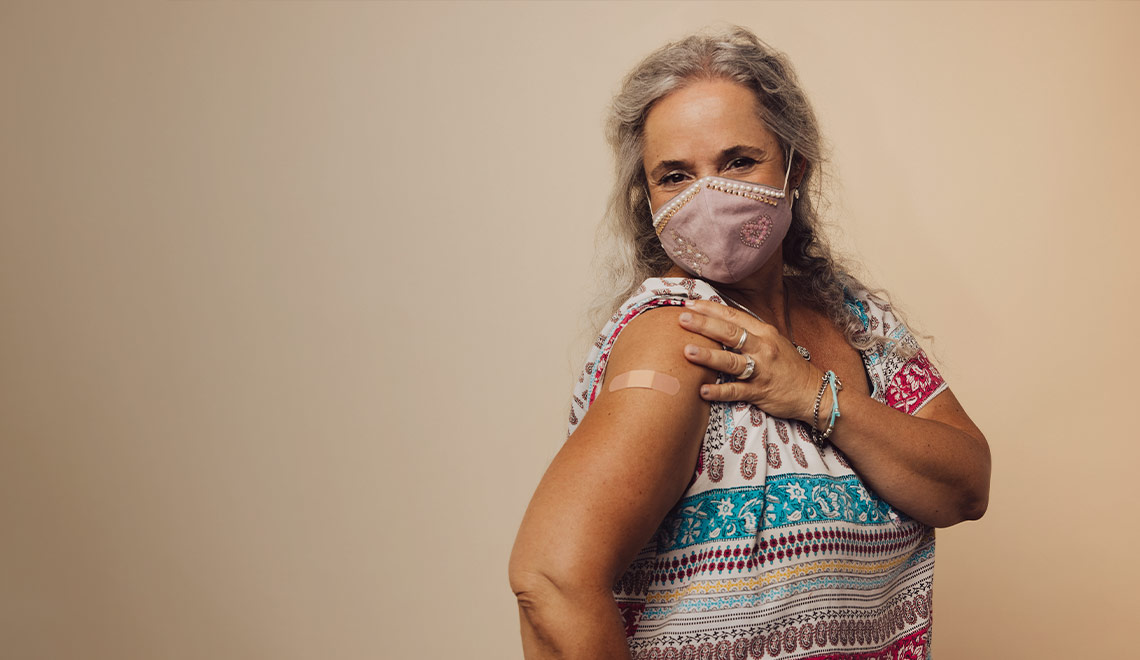
Associate Professor Bette Liu used the 45 and Up Study to examine adult vaccination for whooping cough and shingles. The results of her research have helped inform Australia’s wider immunisation plans.

As people across the world roll up their sleeves for the new COVID-19 vaccines, mass adult vaccination has never been more important for protecting community health.
While it’s a hot topic now, Associate Professor Bette Liu has been working in the field of adult vaccination for over a decade, using big data to inform the prevention and control of infectious diseases in adults.
A medically trained epidemiologist based at the School of Population Health at UNSW, Liu has been particularly interested in understanding uptake of vaccines in adults and in the use of whooping cough and shingles vaccines in adults. As she points out – “much of the existing research in vaccine-preventable diseases has mostly focussed on children.”
To really understand the risk factors for whooping cough in adults, Liu turned to the 45 and Up Study, analysing over 260,000 NSW residents over the age of 45 and their linked health records. She found that seniors over the age of 65 are more likely to be hospitalised for whooping cough than those aged 45-64 years. Obesity and pre-existing asthma were also associated with a higher chance of contracting whooping cough.
Off the back of this, Liu studied how effective the whooping cough vaccine really is in older adults. In what became the largest study of its kind, she and her team found the current whooping cough vaccine was about as effective as influenza vaccines for adults.
“It’s not as effective as whooping cough vaccines used in children, but it still offers a reasonable level of protection against whooping cough in older adults,” she says. “What this research really highlighted was the importance of considering vaccination for older adults – and showing that the vaccine has reasonable effectiveness in that population as well.”
What this means for adult vaccination
Associate Professor Liu’s research has gone on to inform some of the recommendations in the Australian Immunisation Handbook around vaccinating older adults against whooping cough – a vaccine that is now readily available as a ten-year booster shot.
Her additional research into adult shingles (also known as herpes zoster) is also shedding light on how vaccination programs treat immunocompromised groups. For example, Liu and her team used 45 and Up health data to show that people with hematological cancers (such as leukemia and lymphoma) had a higher risk of getting shingles, and this increased if they had treatment for the cancer (such as radiotherapy or chemotherapy).
Around the same time as the research, Australia introduced a vaccination program for older adults against shingles in 2016. Ultimately, Liu says the findings helped deliver some important messages about preventing shingles in immunocompromised populations.
“And it’s turning out to be quite topical,” she adds, “since this year we’re going to have a new shingles vaccine available in Australia that, unlike the one used in the existing program, can be given to immunocompromised people.”
Now, as Australia rolls out its COVID-19 vaccine, Liu’s research into adult uptake of vaccines is again proving to be useful for the national vaccine program, identifying those groups who may be less likely to have vaccines, such as migrants, and who may need extra targeted resources and support to get vaccinated.
How to create impact
While it’s a long road from funding to findings, Associate Professor Liu says there are a few things early career researchers can keep in mind for creating high-impact research:
- Talk about your ideas with your supervisors, but also more widely with different experts in the field.
- Do your background research so you know the field well and any existing research gaps.
- Work on your communication skills so you can summarise your findings in brief format. “I often ask my students what their findings mean, and they can sit there a bit flabbergasted! The truth is, you need to be able to answer the question: what do your findings mean and how does that change policy or practice?”
Meet other researchers who are using the 45 and Up Study for high-impact work.
Want more research news? Sign up here





